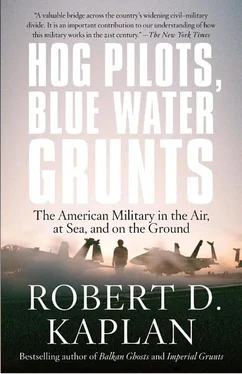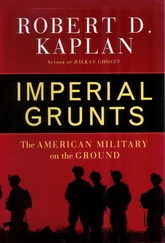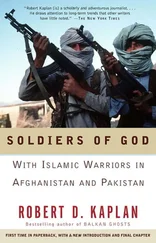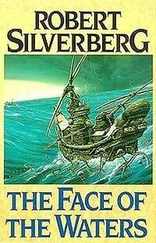As one general officer in the Pentagon told me, “After Iraq, we hope not to be invading a big country for a long time, so we’ll be reduced to low-profile raiding, which the U.S. military has a very long and venerable tradition of from the nineteenth and early twentieth centuries.” It was no accident that throughout my travels, officers and NCOs, who inhabited a tactical universe rather than a strategic one, told me that they found more benefit in studying the nineteenth-century Indian Wars in North America than the two world wars combined, for the former had featured mobile attack sequences, quick strikes, and ambushes and skirmishes where combat was a matter of surprise more than of large-scale maneuver. 5Small-unit combat, again, a world of junior officers and NCOs.
A military was only as good as the courses taught at its staff schools, and a whole generation of officers and enlistees, again especially from the Army, was returning from combat zones in Afghanistan and Iraq with lessons learned to revitalize curriculums. Through it all, through the course of natural disasters like the tsunami and a badly planned occupation, as well as Special Operations deployments in dozens upon dozens of countries, the all-volunteer U.S. military was producing a caste of long-serving veterans who could govern as well as fight, accustomed to both civilian-style management and urban combat. Before 9/11, this military had enjoyed a relatively comfortable, peacetime lifestyle with only certain units sent to dangerous hellholes. [1] Michael Vlahos, “Culture’s Mask: War & Change After Iraq,” Johns Hopkins University, Applied Physics Laboratory, Laurel, Md., 2004. Albeit to a lesser degree, President Bill Clinton also encouraged an expeditionary spirit by frequently deploying the military. Service in the Balkans, despite strict rules of engagement that severely minimized risk, constituted a morale boost compared to interminable training exercises in Germany.
That period in American military history seemed over.
Leon Uris, a former Marine drill instructor, as well as a radio operator during the World War II landings at Guadalcanal and Tarawa, begins his first novel, Battle Cry, with a soliloquy by a salty veteran that, in fact, reveals the mindset of America’s expeditionary military a half century after he wrote these lines:
You can best identify me by the six chevrons, three up and three down, and by that row of hashmarks. Thirty years in the United States Marine Corps.
I’ve sailed the Cape and the Horn aboard a battlewagon with a sea so choppy the bow was awash half the time under thirty-foot waves. I’ve stood Legation guard in Paris and London and Prague. I know every damned port of call and call house in the Mediterranean and the world that shines beneath the Southern Cross like the nomenclature of a rifle.
I’ve sat behind a machine gun poked through the barbed wire that encircled the International Settlement when the world was supposed to have been at peace, and I’ve called Jap bluffs on the Yangtze Patrol a decade before Pearl Harbor.
I know the beauty of the Northern Lights that cast their eerie glow on Iceland and I know the rivers and the jungles of Central America… [and] the palms of a Caribbean hellhole.
Yes, I know the slick brown hills of Korea just as the Marines knew them in 1871. Fighting in Korea is an old story for the Corps. 6
———
America’s global military footprint, as I’ve indicated, was made up of not only soldiers and marines, but of sailors and airmen, too. Whereas from 2002 through the middle of 2004, the time frame of Imperial Grunts, I concentrated mainly on unconventional land forces, this book includes long interludes with the Navy and the Air Force, as well as with the conventional Army. It wasn’t just Humvees that I needed to travel inside of, but also destroyers, nuclear submarines, bomber planes, and Stryker combat vehicles.
And whereas the first two years of my travels with the military were usually clustered around the Greater Middle East and its shadow zones (from the Horn of Africa to Afghanistan), the scene in the course of this volume shifts to the Pacific, over which loomed the challenge of a rising China, as well as of a still-divided Korea. Indeed, it seemed that the ultimate strategic effect of the Iraq war might be to speed up the arrival of the Asian Century not just in economic terms, but in military terms, too. While the American government was distracted by Iraq, and Europe’s defense establishments continued to be budget-starved, Asian militaries—China’s, Japan’s, India’s, and so forth—were quietly enlarging and modernizing, even as their economic leaders became more and more integrated among themselves and with the rest of the world. If the development of Asian militaries was anything to go by, the Middle East was now, the Pacific the future.
But I begin the second part of my travels, from 2004 to 2006, with marines in West Africa. Traveling back and forth between Africa and the Pacific quickly would become a pattern for me.
ONE
AMERICA’S AFRICAN RIFLES
WITH A MARINE PLATOON
African Sahel, Summer 2004
In the early summer of 2004, just as the United States was dismantling the Coalition Provisional Authority in Iraq, sending home its proconsul, L. Paul Bremer III, U.S. Marines and Army Special Forces were in various stages of deploying to the southern fringe of the Sahara Desert, the Sahel, one of the few battlegrounds left in the Global War on Terror for the U.S. military to enter, as it was already deployed in so many other parts of the world.
Local alliances and the training of indigenous troops have been a traditional means of projecting power at minimum risk and fanfare. This was true of Rome even in regard to adjacent North Africa, to say nothing of its Near Eastern borderlands; and it was particularly true of France and Britain, two-thirds of whose expeditions were composed of troops recruited in the colonies. [2] See Sallust’s The Jugurthine War, composed between 44 and 40 B.C., and Douglas Porch’s introduction to the Bison edition of Col. C. E. Callwell’s Small Wars: Their Principles & Practice (1896; Lincoln: University of Nebraska, 1996). These are but two examples of a vast military literature about how imperial powers used their influence.
As Tacitus writes, “We Romans value real power but disdain its vanities.” 1Taking Tacitus to heart, I went to the Niger River region of the African Sahel, or “coast,” a belt of savannah and scrub on the Sahara’s southern edge, to witness a version of America’s reach that was radically different from Iraq, certainly more modest, and hopefully more successful.
———
Among the great rivers of Africa, after the Nile and the Congo there is the Niger, which medieval Arab geographers such as Ibn Battuta called “the Nile of the Negroes.” The Niger rises within 492 feet of the Atlantic Ocean in the jungly, mountainous borderland of Guinea and Sierra Leone and flows northeast into Mali, past the desert caravan centers of Timbuktu and Gao. Then, arcing southeast through Niger and along the Benin border, it drops down into Nigeria, breaking up into an immense delta amid the malarial swamps of the Bight of Biafra. The curvilinear journey of 2,600 miles from the sea deep into the desert, and back to the sea again, seems almost contrary to the laws of nature.
Herodotus, in the course of his travels in the fifth century B.C., heard mention of the river. In the vicinity of eastern Libya he was told about a group of young and adventurous Nasamonians, who lived in nearby Syrtis along the Mediterranean coast. These Nasamonians had packed a good supply of food and water and set off into the interior of Libya. After traveling for many days southwestward through the desert they came upon a region of sparse vegetation where they were attacked by black men “of less than middle height,” speaking an unintelligible language. These “dwarfs” carried the Nasamonians through a marshy country whereupon they sighted a “great river with crocodiles” that “flowed from west to east.” 2
Читать дальше












